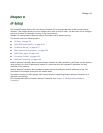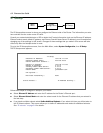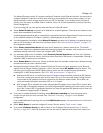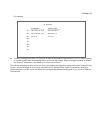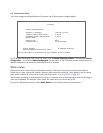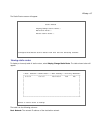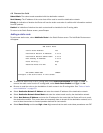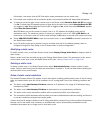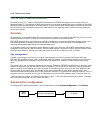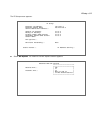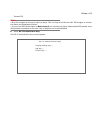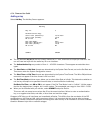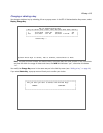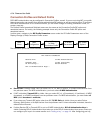IP Setup 6-9
information; Low means that the RIP information takes precedence over the static route.
■ If the static route conflicts with a connection profile, the connection profile will always take precedence.
■ To make sure that the static route is known only to the Router, select Advertise Route Via RIP and toggle
it to No. To allow other RIP-capable routers to know about the static route, select Advertise Route Via RIP
and toggle it to Yes. When Advertise Route Via RIP is toggled to Yes, a new item called RIP Metric appears
below Advertise Route Via RIP.
With RIP Metric you set the number of routers, from 1 to 15, between the sending router and the
destination router. The maximum number of routers on a packet’s route is 15. Setting RIP Metric to 1
means that a route can involve 15 routers, while setting it to 15 means a route can only involve one router.
■ Select ADD STATIC ROUTE NOW to save the new static route, or select CANCEL to discard it and return to
the Static Routes screen.
■ Up to 32 static routes can be created, but one is always reserved for the default gateway, which is
configured using either Easy Setup or the IP Setup screen in system configuration.
Modifying a static route
To modify a static route, in the Static Routes screen select Display/Change Static Route to display a table of
static routes.
Select a static route from the table and go to the Change Static Route screen. The parameters in this screen
are the same as the ones in the Add Static Route screen (see “Adding a static route” on page 6-8).
Deleting a static route
To delete a static route, in the Static Routes screen select Delete Static Route to display a table of static
routes. Select a static route from the table and press Return to delete it. To exit the table without deleting the
selected static route, press Escape.
Rules of static route installation
The Netopia Firmware Version 5.4 applies certain rules before installing enabled static routes in the IP routing
table. An enabled static route will not be installed in the IP routing table if any of the following conditions are
true:
■ The static route’s Next Gateway IP Address matches an IP address in the range of IP addresses being
distributed by DHCP.
■ The static route’s Next Gateway IP Address is determined to be unreachable by the Router.
■ The static route’s route information conflicts with a connection profile’s route information.
■ The connection profile associated with the static route has a disabled dial-on-demand setting, and there is
no current connection using that connection profile.
A static route that is already installed in the IP routing table will be removed if any of the conditions listed above
become true for that static route. However, an enabled static route is automatically reinstalled once the
conditions listed above are no longer true for that static route.



